
New research has quantified and explained the mechanism of hydrogen spillover, a process first identified in 1964 where hydrogen atoms “spill” from a metal catalyst onto an oxide surface. The findings, which show that entropy drives the spillover, could potentially revolutionize hydrogen storage and activation, offering a pathway to clean energy solutions.
Researchers led by Penn State claim that this understanding could pave the way for improvements in hydrogen activation and storage, contributing to advancements in clean energy technology.
Hydrogen spillover is exactly as the name suggests. Small metal nanoparticles anchored on a thermally stable oxide, like silica, comprise a major class of catalysts. Catalysts are materials that speed up chemical reactions without getting used up in the process. The catalytic reaction usually occurs on the reactive — and expensive — metal. However, in certain cases, hydrogen atom-like equivalents literally spill from the metal to the oxide. These hydrogen-on-oxide species are called “hydrogen spillover.”
First described in 1964, the curiosity has garnered more attention recently as a potential pathway to harness hydrogen for clean energy; however, it hasn’t gained much headway, according to Bert Chandler, professor of chemical engineering and chemistry at Penn State. That’s in large part because, while researchers have been able to identify hydrogen spillover for nearly 60 years, no one has been able to quantify it and describe the mechanism underpinning the phenomenon — until now.
With some luck and a lot of work, Chandler said, a Penn State-led research team has discovered how and why hydrogen spillover occurs and provided the first quantitative measurement of the process. They published their findings in Nature Catalysis.
The work, Chandler said, provides an opportunity to better understand and develop hydrogen activation and storage. Conventional hydrogen storage requires significant amounts of energy to keep the hydrogen cool enough to remain a liquid. With their unique gold-on-titania system, however, the research team demonstrated that they can effectively, efficiently, and reversibly break apart hydrogen molecules into hydrogen atoms — a process needed to induce hydrogen spillover — at higher temperatures that require less energy.
“We are now able to explain how hydrogen spillover works, why it works, and what drives it,” said Chandler, corresponding author on the paper. “And, for the first time, we were able to measure it — that’s key. Once you quantify it, you can see how it changes, figure out how to control it, and figure out how to apply it to new problems.”

This schematic illustrates how hydrogen-like equivalent atoms spillover the metal and adsorb to the titanium oxide. Credit: Courtesy Bert Chandler/Penn State
In hydrogen-spillover systems, hydrogen gas reacts to split into hydrogen atom equivalents — a proton and an electron but in a slightly different arrangement than their typical layout. In this system, the protons stick to the material’s surface while the electrons enter the semiconducting oxide’s near-surface conduction band. The researchers said they hope to learn to use them to test more advanced chemistry applications such as converting the atoms for use as clean fuel and hydrogen storage, according to Chandler.
“The semiconductor piece is important because the hydrogen atom equivalents have their protons on the surface and their electrons on the subsurface — they are still close together but separated by a conductive surface,” Chandler said, explaining that this small separation avoids paying a big energy penalty typically needed for charge separation. “For almost all adsorption systems, you have to have favorable heat adsorption to overcome the energy loss it takes to put a gas molecule into a solid via adsorption. It’s entropically unfavorable.”
Entropy represents the unavailable thermal energy needed to move a process forward. In other words, entropy is energy dispersing to substates, like ice melting into water when the energy to keep the molecules in a solid state is unavailable. Energies require balancing, Chandler said, and measuring entropy’s contribution to the balance is near impossible in these systems.
Hydrogen spillover was first discovered in a platinum-on-tungsten-oxide system in 1964 and since then has been observed in different systems. Chandler explained that, until recently, researchers believed the hydrogen atom equivalents were strongly bonded to the nanoparticle layer and required more thermal energy to break those bonds and produce more spillover. However, most hydrogen spillover-facilitating systems are messy, as the spillovers can appear to vary their bonding strength to both the nanoparticle and the semiconductor oxide substrate. Chandler dubbed this “fizz adsorption,” describing the fuzzy, sticky bonding that conceals true adsorption and masks what’s driving the spillover: thermal energy or entropy.
“We figured out how to measure that spillover adsorption in a different system: gold on titanium oxide,” Chandler said, noting that gold catalyzes hydrogen differently than many other metals. “Gold requires almost no thermal energy to initiate a reaction with the hydrogen, and it only activates that reaction at the interface with titanium oxide substrate. That means that no hydrogen adsorbs to the gold, so we can quantify all spillover produced because it all goes to the substrate, without leaving any fizz on the gold.”
Without the fizz, the researchers realized that the adsorption was weak — which “flew in the face of what everyone knew,” Chandler said. Without thermal energy as a significant variable, the researchers determined that only entropy could be driving the atoms from the gold to the substrate.
“We got really lucky with our choice of system, which we selected because we were already interested in how gold works as a catalyst,” Chandler said, explaining that previous researchers could measure the amount adsorbed accurately because weak adsorption on the oxide masked the amount of spillover from the metal. “We didn’t invent new chemistry; we just collected the data. It took us six years of measuring and re-measuring — when you make an exceptional claim, you better have exceptional evidence — but we filled this hole in our understanding: entropy drives hydrogen spillover.”
The researchers said they are now planning to investigate material types that could facilitate better hydrogen storage. The work is a step toward clean energy development, according to Chandler, and a striking example of how the scientific process works.
“Science is a self-correcting process — if you find something that doesn’t make sense, you work to figure it out,” Chandler said. “We’ve known about spillover for a long time, but no one had found the right system to quantify and understand it. We collected the data and figured out how to explain the phenomenon. It turns out, the balance of energies that we use is not always obvious, and entropy can drive things we don’t expect.”
Reference: “The role of surface hydroxyls in the entropy-driven adsorption and spillover of H2 on Au/TiO2 catalysts” by Akbar Mahdavi-Shakib, Todd N. Whittaker, Tae Yong Yun, K. B. Sravan Kumar, Lauren C. Rich, Shengguang Wang, Robert M. Rioux, Lars C. Grabow, and Bert D. Chandler, 10 August 2023, Nature Catalysis.
DOI: 10.1038/s41929-023-00996-3
The Department of Energy’s Basic Energy Sciences Program, the National Science Foundation, and the Research Corporation for Science Advancement supported this work.


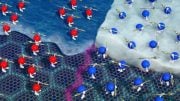


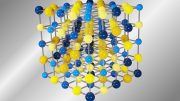
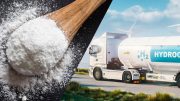
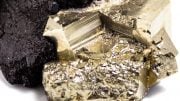
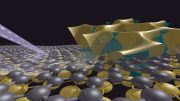
Be the first to comment on "Striking Gold – A Molecular Mystery Solution for Potential Clean Energy"